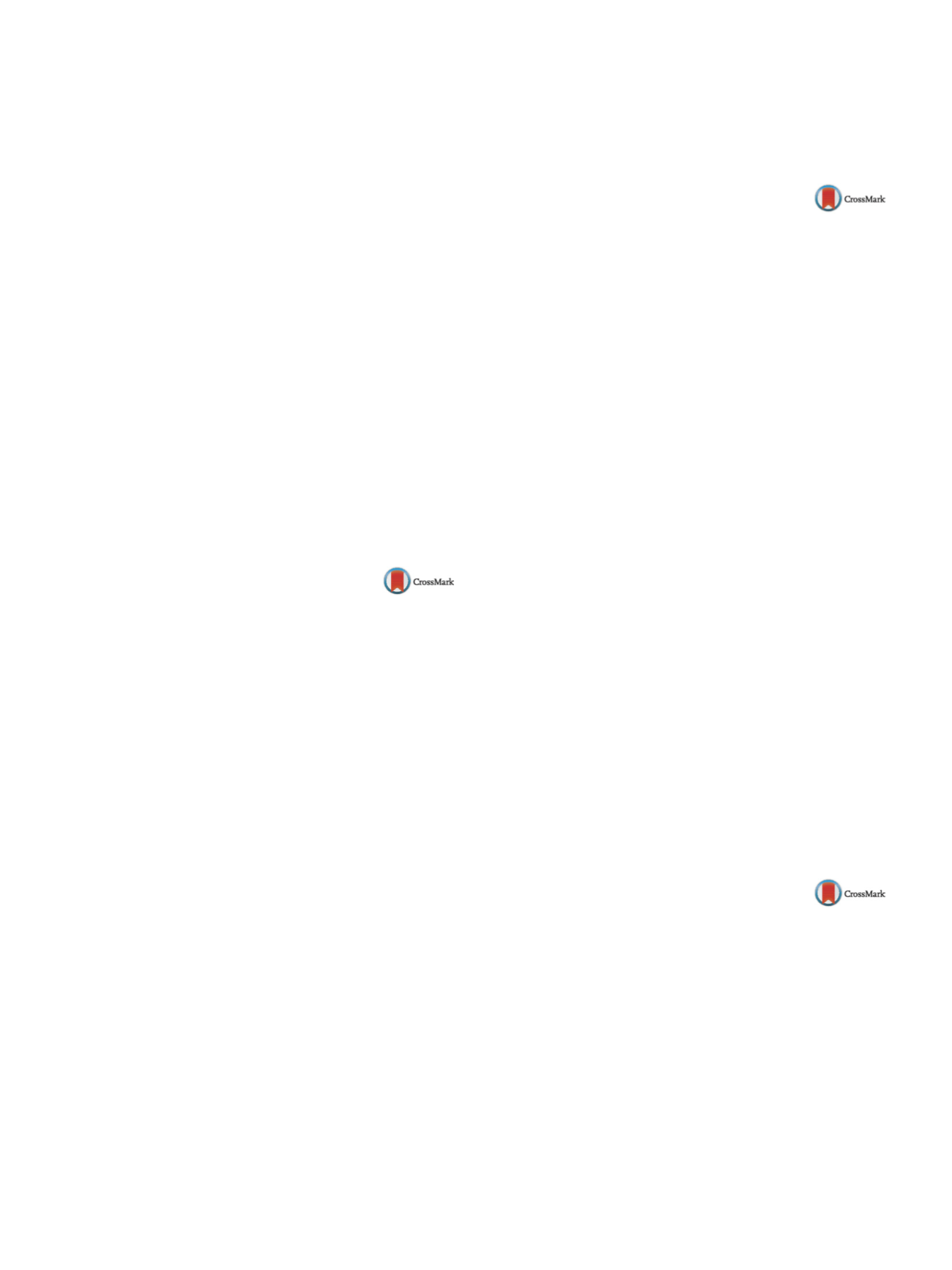

S864
25th European Congress of Psychiatry / European Psychiatry 41S (2017) S847–S910
Methods
Thirty-three treatment-seeking AUD individuals were
recruited from addiction division of psychiatry department of
C¸ anakkale Onsekiz Mart University. Patients who agreed to par-
ticipate in the study and completed detoxification treatment
were enrolled to the study. After describing the study and
obtaining informed consent, participants were assessed with
demographic questionnaires (including questions such as age,
gender, income status, duration of alcohol use, amount of alco-
hol use, duration of abstinence were given to participants)
followed by the semi-structured interview. Emotion regula-
tion was assessed with the difficulties in emotion regulation
scale.
Result
Of the patients, 93.9% were male. The average age of par-
ticipants was 41.21
±
12.8 years. Of the participants, 60.6% were
type 1 and 39.4% of type 2. There was statistically significant dif-
ference between type 1 and type 2 alcoholism in terms of emotion
regulation. Type 2 alcoholism has more emotional regulation diffi-
culties than type 1 alcoholism. This finding may be consistent with
earlier onset of having more impulsive drinking pattern in9 type 2.
Conclusions
In conclusion alcohol use disorders are thought to
be associated with emotion dysregulation. Emotion regulation dif-
ficulties, was higher in type 2 than type 1. Emotional regulation
strategies should be considered in the interventions and may be
evaluated as a new prognostic criteria.
Disclosure of interest
The authors have not supplied their decla-
ration of competing interest.
http://dx.doi.org/10.1016/j.eurpsy.2017.01.1727EV1398
Impact of childhood trauma on
co-morbidity among alcohol
dependent patients: Controlled study
D. Gulec Oyekcin
∗
, A. Gurgen
Canakkale Onsekiz Mart University Medical Faculty, Psychiatry,
Canakkale, Turkey
∗
Corresponding author.
Introduction
Childhood trauma has been found to be prevalent
in treatment-seeking alcoholics.
Objectives
We aimed to investigate the childhood trauma preva-
lence among alcohol dependent patients and the prevalence of
psychiatric co-morbidity.
Methods
A total of 61 participants were assessed; 35 treatment-
seeking alcohol dependent patients and 26 age-gender matched
controls in the addiction division of psychiatry department of
C¸ anakkale Onsekiz Mart University. After describing the study
and obtaining informed consent, participants were assessed with
demographic questionnaires, followed by the structured clinical
interview for the DSM-IV-TR and childhood trauma questionnaire
(CTQ-28).
Result
The 91.4% of the patients were male, mean age was
42.03
±
12.9. The overall prevalence of CTE of the alcohol depen-
dent patients was (88.6%) higher than the control (42.3%) group.
Respectively the prevalence of physical neglect was 80%, emo-
tional neglect 74.3%, emotional abuse was 51.4%, physical abuse
40% and sexual abuse 28.6%. For psychiatric disorders 96.8% of the
alcohol dependent patients with childhood trauma reported any of
the psychiatric disorders, 64.5% ever having a mood disorder with
25.8% ever having any anxiety disorders, and 16.1% ever having
attention andhyperactivity disorder. Themost commonpsychiatric
co-morbidity was found to be as depression (58.1%).
Conclusions
In conclusion alcohol use disorders are thought to
be associated with childhood trauma. Patients with alcohol use
disorders are exposed to have more childhood trauma. Child-
hood trauma is associated with psychiatric co-morbidity especially
depression. We have to ask for childhood trauma in alcohol depen-
dent patients with psychiatric co-morbidity.
Disclosure of interest
The authors have not supplied their decla-
ration of competing interest.
http://dx.doi.org/10.1016/j.eurpsy.2017.01.1728EV1399
Tobacco cessation failure: Predictive
value of BDI score
H. El kef
i 1 ,∗
, Y . Guetary
2 , I. Bouzouita
1 , C. Bechikh Brahim
1 ,W. Krir
1 , S. Eddif
1 , A.Oumaya
11
Hôpital militaire principal d’instruction de Tunis, Psychiatry, Tunis,
Tunisia
2
Hôpital militaire principal d’instruction de Tunis, Emergency Unit,
Tunis, Tunisia
∗
Corresponding author.
Background
Smoking is a major healthcare issue. Evidence
shows considerable comorbidity betweennicotine dependence and
depressive disorders.
Objectives
We are interested in the correlation between Beck’s
depression inventory (BDI) scores and smoking cessation out-
comes.
Methods
Retrospective, transversal and analytical study. Data
were collected from 95 patients followed in the smoking cessation
consultation of The military hospital of Tunis. The BDI was used to
assess depressive symptoms and nicotine dependence evaluated
by Fagerstrom test for nicotine dependence (FTND).
Results
Population was composed of men (92%), married in 65%
of cases, with amean age of 45
±
13 years. Themean age of smoking
initiation was 18
±
4.5 years. Regular smoking average was 37
±
20
Packs/Year. The mean cigarette consumption was 30
±
15 per day.
Forty-two percent patients reported at least one attempt to quit
smoking, with an average of 37.26 days of abstinence. The mean
score of FTND test was 7
±
2.31. The BDI score was higher than 3 in
86% of cases. Patients with severe depression (BDI > 15) had never
attempted a withdrawal in 71% of cases (
P
= 0.009), had a high or
very high dependence in 85.7% of cases (
P
= 0.016). The average of
cigarettes per daywas 40 (
P
= 0.035) and they had failedwithdrawal
in 79% of cases (
P
= 0.53).
Conclusion
There was a fairly consistent association between
presence of depression and smoking severity. This suggests that for
individuals with nicotine dependence who are interested in quit-
ting smoking, assessment and treatment of depressive symptoms
may improve smoking cessation outcomes.
Disclosure of interest
The authors have not supplied their decla-
ration of competing interest.
http://dx.doi.org/10.1016/j.eurpsy.2017.01.1729EV1400
Does a state of alcohol hangover
impair event based prospective
memory?
T. Heffernan
Northumbria University, Psychology, Newcastle upon Tyne, United
Kingdom
Introduction
The alcohol hangover state (AHS) is characterized
by range of symptoms (e.g., drowsiness, fatigue, gastro-intestinal
problems, dry mouth, nausea, sweating) that remain after ones
blood-alcohol level returns to zero following a recent bout of exces-
sive drinking. Recent findings have revealed a range of cognitive
deficits associated with an AHS, including memory deficits. It is
less clear what impact the AHS has upon everyday remembering;
of which prospective memory is an excellent example (PM: mem-
ory for future plans/actions; such as remembering to performa task
at a specific time).
Aims
The present study explored whether the AHS impairs
everyday PM.


















